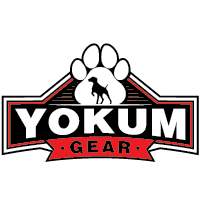When it comes to training and walking your dog, choosing the right head harness can make a significant difference. A well-fitted harness not only ensures your dog's comfort but also enhances control during walks. With a plethora of options available in the market, it's essential to understand the factors to consider while selecting the best head harness for your furry friend.
Understanding the Types of Head Harnesses
Different dogs have different needs, and harnesses come in various styles to suit various walking and training requirements. Here are some common types of head harnesses:
- Gentle Leader: This harness encircles the dog’s muzzle and fastens around the back of the neck. It offers excellent control without choking the dog and is ideal for dogs prone to pulling.
- Halti: Similar to the Gentle Leader, the Halti harness also fits around the muzzle and neck. It includes an additional strap that connects to the collar, providing extra security.
- No-Pull Harness: While not a head harness per se, no-pull harnesses discourage pulling by redirecting the dog's momentum. These harnesses usually have attachment points in the front, reducing strain on the dog's neck.
Factors to Consider When Choosing a Head Harness
Several factors should be taken into account to ensure you select the right head harness for your dog. These include:
Dog's Size and Breed
The harness must fit your dog's size and breed appropriately. While most brands offer adjustable harnesses, some specialize in designs for small or large breeds. Measure your dog's head and neck circumference accurately to find the perfect fit.
Material and Comfort
Look for harnesses made of soft, durable materials that won't chafe your dog's skin. Padded harnesses offer extra comfort, especially for longer walks. Ensure that the harness allows for easy movement and doesn't restrict your dog's natural gait.
Ease of Use
A good head harness should be easy to put on and take off. Complicated designs can be frustrating, especially if your dog isn't fond of wearing harnesses. Quick-release buckles and adjustable straps can simplify the process.
Control and Safety
One of the primary reasons for using a head harness is to gain better control over your dog. Ensure that the harness provides secure attachments and minimizes the risk of the dog slipping out. Some harnesses come with reflective strips or attachments for lights, enhancing visibility during nighttime walks.
Training and Introducing the Head Harness
Getting your dog accustomed to a head harness may take some time and patience. Here are some steps to make the transition smoother:
- Introduce the Harness Gradually: Allow your dog to sniff and inspect the harness before putting it on. Reward them with treats to create a positive association.
- Start With Short Sessions: Initially, use the harness for short walks or training sessions. Gradually increase the duration as your dog becomes more comfortable.
- Use Positive Reinforcement: Always reward your dog with praise and treats for wearing the harness and walking calmly. This will encourage good behavior.
- Stay Consistent: Consistency is key to successful training. Use the harness regularly and follow a routine to help your dog adapt more quickly.
Conclusion
Selecting the right head harness for your dog can significantly improve your walking and training experience. By considering factors such as size, material, ease of use, and safety, you can ensure that your furry friend remains comfortable and secure. Remember to introduce the harness gradually and use positive reinforcement to help your dog adjust. With the right head harness, both you and your dog can enjoy walks and outings without stress or discomfort.

